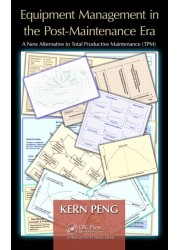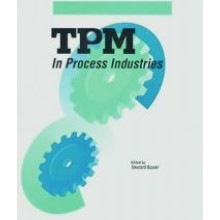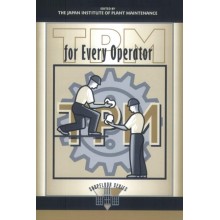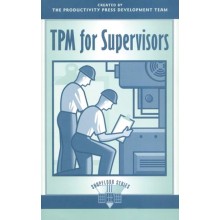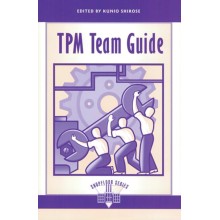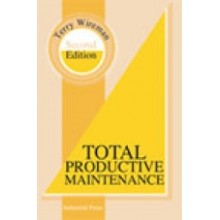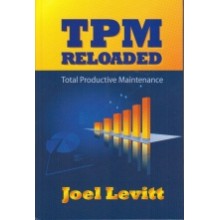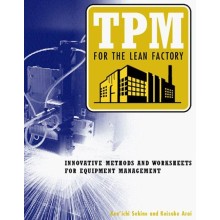Equipment Management in the Post-Maintenance Era: A New Alternative to Total Productive Maintenance (TPM)
Quantity:
-
Add to Compare
Recent advancements in information systems and computer technology have led to developments in equipment and robotic technology that have permanently changed the characteristics of manufacturing equipment. Equipment Management in the Post-Maintenance Era: A New Alternative to Total Productive Maintenance (TPM) introduces a new way of thinking to help high-tech organizations manage an increasingly complex equipment base. It also facilitates the fundamental understanding of equipment management those in traditional industries will need to prepare for the emerging microchip era in equipment.
Kern Peng shares insights gained through decades of managing equipment performance. Using a systems model to analyze equipment management, he introduces alternatives in equipment management that are currently gaining momentum in high-tech industries. The book highlights the fundamental internal flaw in maintenance organizational setup, presents new approaches to replace maintenance functional setup, and illustrates a time-tested transformation and implementation process to help transition your organization from the maintenance era to the new post-maintenance era.
- Breaks down the history of equipment into five phases
- Provides a clear understanding of equipment management fundamentals
- Introduces alternatives in equipment management beyond the mainstream principles of maintenance management
The book examines maintenance management logistics, including planning and budgeting, training and people development, customer services and management, vendor management, and inventory management. Supplying a comprehensive look at the history of equipment management, it analyzes current maintenance practice and details approaches that can significantly improve the effectiveness and efficiency of your equipment management well into the future.
Table of Contents
INTRODUCTION TO EQUIPMENT MANAGEMENT
Introduction
Background
Maintenance Management
Equipment Management
Key Equipment Terminology
Equipment States
Equipment Time
Equipment Actions
Equipment Failure Patterns
Equipment Performance Measurements
History of Equipment Management
Introduction
Phase 1: Breakdown Management
Phase 2: Preventive Maintenance
Phase 3: Productive Maintenance
Phase 4: Total Productive Maintenance
Phase 5: TPM with Predictive Maintenance
Summary of the Pre-maintenance and Maintenance Phases
Introduction to the Post-Maintenance Era
The New Business Environment
Operational Changes
Equipment Characteristics
New Enabling Technologies
New Management Concepts
The Issues of Maintenance
Problems in Objectives
Structural Inefficiency
Unsuitable for Changing Environment
Introduction to Phase 6: Post-Maintenance Era
THE MAINTENANCE SYSTEM
General Maintenance Concepts and Practices
Introduction
Preventive Maintenance
Preventive Maintenance Schedule
Preventive Maintenance Task List
Preventive Maintenance Staffing Requirements
Preventive Maintenance Equipment/Tool Requirements
Preventive Maintenance Materials/Parts Requirements
Preventive Maintenance Information System
Reliability-Centered Maintenance
Predictive Maintenance
Maintenance Prevention
Total Productive Maintenance
Terotechnology
Maintenance Management Logistics
Introduction
Planning and Budgeting
Strategic Planning in Maintenance
Headcount Plan
Budget Plan
Tactical Planning in Maintenance
Training and People Development
Customer Services and Management
Vendor, Supplier, and Contract Management
Inventory Management
Maintenance Performance Indicators
Introduction
Equipment Performance Indicators
Safety Indicators
Purpose
Format and Variation
Presentation
Availability Indicators
Purpose
Format and Variation
Presentation
Reliability Indicators
Purpose
Format and Variation
Presentation
Maintainability Indicators
Purpose
Format and Variation
Presentation
Utilization Indicators
Purpose
Format and Variation
Presentation
Process Performance Indicators
Labor Productivity Indicators
Purpose
Format and Variation
Presentation
Nonproductive Downtime Indicators
Purpose
Format and Variation
Presentation
Customer Satisfaction Indicators
Purpose
Format and Variation
Presentation
Operational Misses and Error Rates
Purpose
Format and Variation
Presentation
Cost Performance Indicators
Cost Rates
Purpose
Format and Variation
Presentation
Cost Breakdown by Categories
Purpose
Format and Variation
Presentation
Computerized Maintenance Management Systems
Introduction
CMMS Objectives
CMMS Functions
Equipment Module
Work Order Module
Preventive Maintenance Module
Safety Module
Labor Module
Inventory Module
Financial Module
Calendar Module
CMMS Features
Assessibility and Security
Communication and Notification
Data Entry and Presentation
Integration
Flexibility and Customization
CMMS Implementation
THE POST-MAINTENANCE ERA
The Systems View of the Equipment Management Process
Introduction
Environmental Suprasystem
Goals and Values Subsystem
Structural Subsystem
Technical Subsystem
Psychosocial Subsystem
Managerial Subsystem
New Changes in the Post-Maintenance Era
Introduction
Equipment Management Objectives
Functional-Level Objectives
Job-Level Objectives
Organizational Structure Changes
The Platform Ownership Concept
Employee Skill Requirements
Computerized Equipment Management Systems
Work Environment Changes
Management Changes
Summarizing the Post-Maintenance Era
Transformation and Implementation
Introduction
Environmental Studies
Managerial Preparedness
Goal and Value Changes
Psychosocial Changes
Technical Changes
Structural Changes
Glossary
References
Write a review
Your Name:Your Review: Note: HTML is not translated!
Rating: Bad Good
Enter the code in the box below:
Copyright © 2014 Engineering Standards Bureau. All Rights Reserved.
Developed By Zoom Into Web


